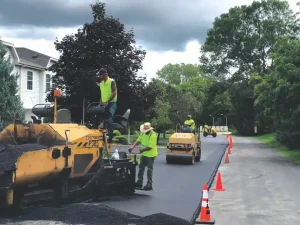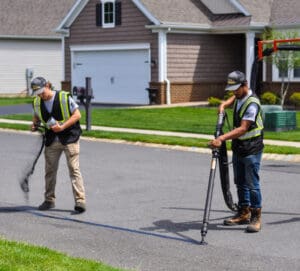To seal or to fill a crack in an asphalt pavement remains a tough question for many. They are both great and effective crack repair options that prolong the lifespan of your asphalt paving. Asphalt sealants and fillers differ and each comes with its own set of benefits and risks. So, certain factors should be considered in choosing the right crack treatment between the two.
Read on to find out how crack sealing and crack filling compare so you can make an informed decision.
Asphalt Crack Sealing or Filling
Asphalt Crack Sealing
Crack sealing is ideal for relatively smaller and more manageable cracks. It’s an excellent repair solution for cracks in their initial stages of formation, usually shallow and less than an inch wide. The goal of asphalt sealing is to prevent cracks from deepening and spreading out. It’s a quick fix and produces long-term results, lasting up to eight years or even more.
However, crack sealing is expensive since it requires the use of costly equipment. Standard tools needed to finish a typical sealing procedure include tanks, melt pots, and torches. Sometimes, a contractor may need more tools depending on the level of skill or nature of the job involved.
Asphalt Crack Filling
On the other hand, crack filling involves using hot- or cold patches to fill larger and wider cracks and holes that sealants won’t address. It, therefore, is recommended for crack formations that have been neglected for long periods of time and as a result, deteriorated deeper and wider into the substrate.
This crack treatment solution is less costly and highly flexible. Not so much equipment, tools, and materials are needed to complete a crack-filling job. But it is not ideal where long-term or permanent results are needed. Should you opt for this option, prepare for a more frequent filling to keep cracks at bay.
What Method Should I Go For?
Having understood the differences, choosing one over the other may seem like a straightforward decision. Unfortunately, there are factors more to take into account. One such factor is the type of crack. Crack sealing is considered a preventive measure aimed at preventing an infant crack from growing and expanding. On the other hand, a filling is recommended for non-working cracks such as block, longitudinal, or diagonal cracks.
Another factor to consider is the type of treatment you intend to use. Crack filling involves using non-rubberized materials and is suitable for non-working cracks. But in the event of active cracks that contract and expand depending on the season, flexible treatment materials like rubberized sealants are recommended.
Cost implications and durability are other considerations. Crack sealing is relatively more expensive. But you’re guaranteed long-term or even permanent results. Crack filling is substantially less expensive than sealing. But it’s considered a temporary fix with results lasting one or two seasons.
How Pro-Pave Can Help
The right method for your project will primarily depend on your goal, type of asphalt cracks, and budget. Still, if you’re not well-informed and experienced in matters of asphalt paving, it’s easy to make a mistake and choose the wrong option. You can end up using asphalt filler where you should have used a sealant. It pays to work with a professional contractor to avoid such costly and irreversible mistakes.
Pro-Pave Inc., is a full-service professional asphalt paving, maintenance, and repair company. We have a long history of delivering quality services to clients of all kinds.
Call us at (703) 433-9500 to find out how we can be of help.



